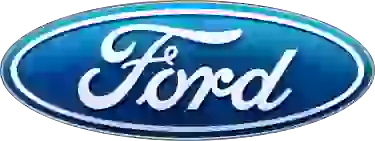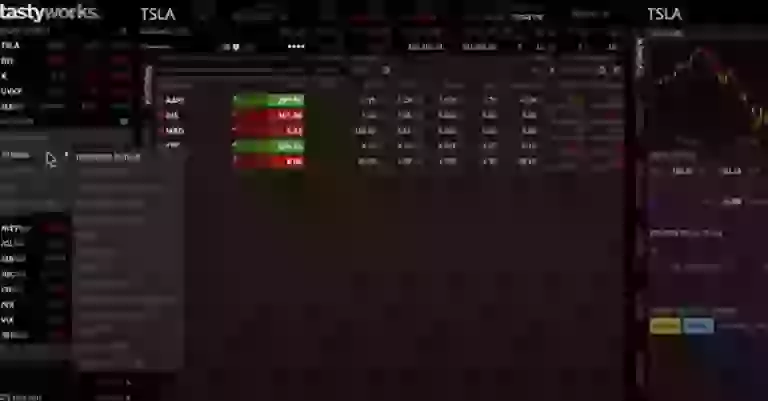Ford Motor Company
Ford Motor Company
Ford Motor Company, based in Dearborn, USA, is the fifth largest automaker in the world (as of 2020) after Toyota, Volkswagen, General Motors, and Hyundai, with sales of 159.6 billion US dollars and a profit of 7.8 billion US dollars. The Group originated from a factory founded by Henry Ford in Detroit in 1903. With the introduction of assembly-line production in 1913, Ford brought about a radical change in the newly emerging automobile industry.

History
The Ford Motor Company was Henry Ford’s second start into independence. In 1899 he had founded the Detroit Automobile Company. It was not successful and was reorganized as early as 1901 under the name Henry Ford Company. In March 1902, management disagreements arose here as well. Ford was looking for a car for a broad clientele; the financiers, above all William Murphy and Lemuel Bowen, wanted to build expensive, lucrative vehicles instead. Ford left the first company that bore his name. In August 1902, Henry M. Leland, who later co-founded Lincoln, took over the business and renamed the company Cadillac.
On June 16, 1903, Henry Ford again founded his own company in Detroit (Michigan) with a capital of 28,000 US dollars, together with the Ford Motor Company. He initially named his vehicles after the alphabet and produced only a few cars a day at his plant on Mack Avenue, where groups of two to three men assembled supplied parts. In the first two years only about 1700 of the types Model A, C and AC were produced.
After the initial low success he had the Piquette Avenue Plant built in Detroit in 1904, where from 1908 the Ford Model T known as the “Tin Lizzy” was produced, which quickly became a sales success. In order to produce the figures demanded by the market, the company moved to the Highland Park Ford Plant as early as 1910, where the new technology of assembly line production was perfected by 1913. Henry Ford took over the then already more than 100-year-old concept of replacement construction from Eli Whitney, who had also designed the first production line. With mostly semi-skilled workers, the cars could thus be produced more cheaply and faster. The assembly time for a car chassis was reduced from over twelve hours to just 1.5 hours at the end. In 1918 half of all cars in the USA were “Model T”. In his memoirs of the car, Ford remarked that his customers could get it in any color in the world – as long as it was black. (Original: “Any customer can have a car painted any colour that he wants so long as it is black.” My Life and Work, 1922) When production ceased in 1927, the company had produced over 15 million “Tin Lizzy”. This figure was only exceeded by the VW Beetle at the beginning of 1972.
On January 1, 1919, Edsel Ford followed his father to the top of the group, but he still retained influence on the management. In the 1920s, the company lost market share. Their declared goal was to build a cheap car that every worker could afford. In order to keep the prices low, they did not offer any additional equipment. General Motors and other companies had already started to offer cars in other colors, some of them better equipped and also more luxurious. These companies also raised the credit limits of their customers so that they could afford the more expensive cars. At the time, Ford complained that the loans were damaging the economy, but due to market constraints, Ford finally settled into the role of the “second winner”.
From 1917, the company opened up an additional market with the production of Fordson tractors (Henry Ford and Son). The Fordson tractors continued to be produced under the Ford name from 1964. The agricultural machinery business was expanded by the purchase of New Holland 1986 considerably; furthermore, in 1987 the Canadian agricultural machinery manufacturer Versatile was taken over. As early as 1991 the agricultural machinery division – and with it New Holland and Versatile – was sold to Fiat. With this sale, Fiat was also assured that it would be able to sell tractors under the Ford brand until the year 2000.
In the early 1940s, Ford opened the Willow Run Factory near Ypsilanti (Michigan) for the production of B-24 Liberator bomber aircraft. Over 8600 machines were manufactured there under license from Consolidated Aircraft. After aircraft production ceased in 1945, the car manufacturer Kaiser Motors took over the factory.[2]
In 1951, Ford established a scientific laboratory in Dearborn, Michigan, for basic research. This led to a remarkable involvement in superconductor research for Ford. In 1964, Ford Research Lab made a fundamental breakthrough with the invention of the superconducting quantum interference device SQUID.[3]
In 1955 Ford became a public limited company.
Initially based on the Ford T-model, commercial vehicles were also produced, which soon developed into independent models and ranged up to medium payload classes. In Germany, the production of trucks above the Transit van, which was introduced in 1953, was initially discontinued in 1961.
In 1961, the company acquired Philco, a manufacturer of televisions, radios and other electrical appliances.[4] Philco had developed the high-frequency-capable surface-barrier transistor in 1953, and in 1955 the first fully transistorized car radio, Chrysler. 1957-1963 Philco produced transistorized large computers. 1974 Ford sold Philco to GTE/Sylvania.[5]
In the early 1960s, the anodic dip coating process for priming car bodies (then known as electrocoating) was first used at Ford. This was considered at the time to be the greatest advance in automotive painting since the invention of the spray gun.[6]
In 1973, Ford again presented two truck models for the European market, followed in 1975 by the Transcontinental heavy-duty truck type. The lighter models were replaced in 1981 by a uniform successor, which was discontinued without replacement at the end of the 1980s. Since then Ford has no longer been represented in the truck sector in Europe. In the USA, the truck product range, which until then had always been continuous except for two series of compact hood trucks, was discontinued in 1997 and the heavy truck division was sold to Freightliner.
In 1989, Ford took over Jaguar, and ten years later, in 1999, Ford took over the passenger car production and the related brand rights from Volvo.
In 1990 Ford sold its subsidiary Ford Aerospace to Loral Corporation, where it is now called Space Systems/Loral.[7] In the same year, Ford acquired a 10.8% stake in Cummins Engine.[8]
From the year 2000 onwards, Ford was plunged into a severe crisis due to a wrong model policy on the domestic market. The group had relied on the high-yield SUVs (Ford Explorer) and pick-ups (Ford F-Series) and neglected the market for compact cars in comparison to foreign manufacturers. The resulting loss of market share was long ignored. After SUVs, pickups and other large cars became more difficult to sell due to increased fuel prices, Ford faced a discount battle similar to General Motors and Chrysler due to ongoing capacity utilization problems at its plants.
The head of the Ford group, Alan Mulally, who was in office from 2006 to mid-2014, had therefore decided on a drastic restructuring programme costing around 11 billion US dollars and involving the loss of 44,000 jobs. Up to 16 production sites were threatened with closure in this context. A model program to be developed successively was to turn the company around to more economical vehicles. The trend was increasingly towards compact vehicles both in the mid-range segment and in the SUV segment, where the trend was away from heavy off-road vehicles towards lighter so-called crossover models such as the Edge and Freestyle models.
In June 2007, the Financial Times reported that Ford was planning to sell its UK subsidiaries Jaguar and Land Rover through the investment banks Goldman Sachs, Morgan Stanley and HSBC. According to analysts, both divisions should be worth around 10 billion US dollars in the package. The Indian group Tata Motors took over both companies in March 2008.
In the US car market, Ford was overtaken by Toyota in 2007 in terms of sales figures, making it the third largest car manufacturer in the United States behind General Motors and Toyota.[9] In January 2008, Ford announced a new severance program to eliminate another 13,000 employees. After a poor fiscal year 2009, the restructuring of the Group and a focus on small cars, the company generated a surplus of $2.1 billion in the first quarter of 2010. The previous year’s result for the same period was still a loss of 1.4 billion US dollars. At the same time, Ford increased its market share in the USA by 2.7 percentage points to 16.6 percent, ahead of the insolvent General Motors Group.[10]
On December 9, 2011, Ford announced its intention to pay a dividend again next March for the first time in five years. The reasons for this were the company’s good economic development and the hope of regaining the confidence of investors.[11]
On August 31, 2012, Ford built its 350 millionth car after 109 years of company history. It is a red Ford Focus, which rolled off the assembly line at the Thai factory in Rayong.[12]

I am David, economist, originally from Britain, and studied in Germany and Canada. I am now living in the United States. I have a house in Ontario, but I actually never go. I wrote some books about sovereign debt, and mortgage loans. I am currently retired and dedicate most of my time to fishing. There were many topics in personal finances that have currently changed and other that I have never published before. So now in Business Finance, I found the opportunity to do so. Please let me know in the comments section which are your thoughts. Thank you and have a happy reading.






